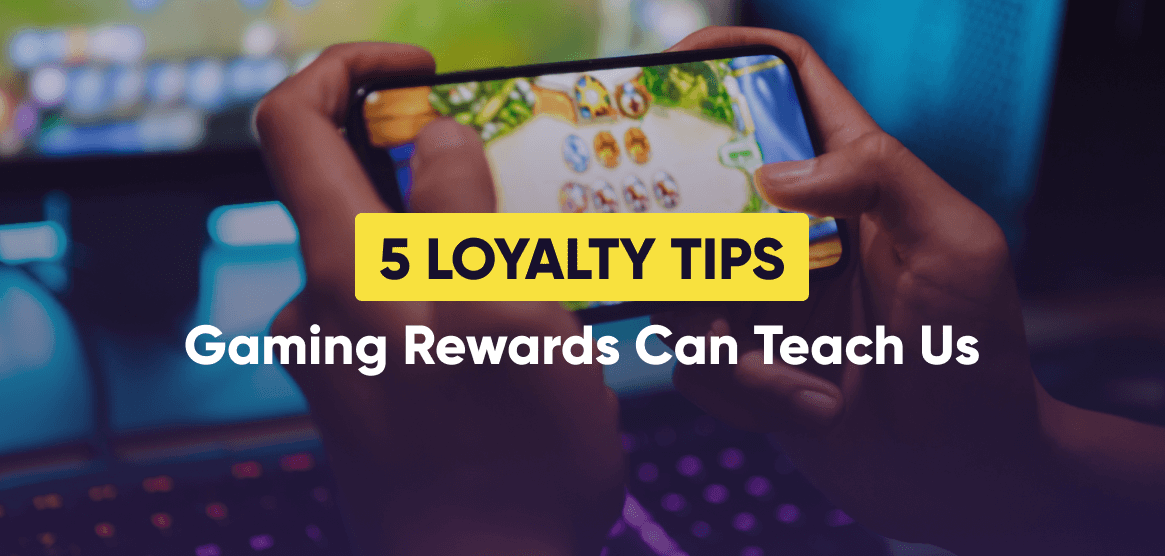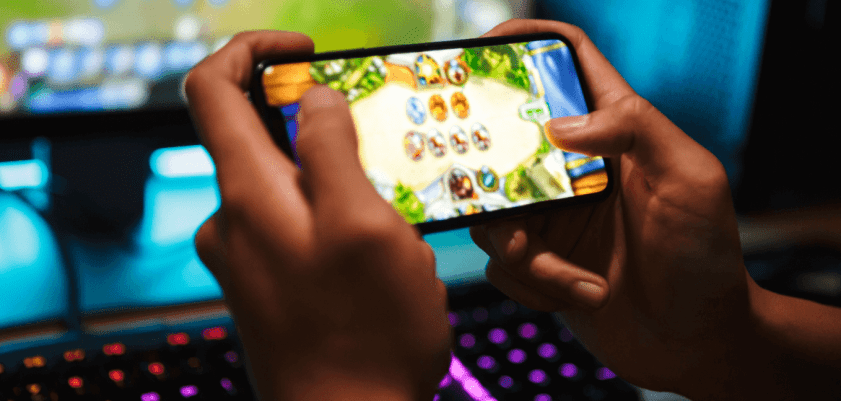When it comes to rewards and gamification, loyalty programs aren’t the only player in the field. In fact, there’s a much larger vertical that often utilizes similar engagement tactics: the gaming industry. Considering that the market in question is expected to reach a value of $314.40 billion by 2026, it is worth taking a look at how gaming rewards are being used to generate long-term engagement, encourage purchases, and build like-minded communities — and explore how each of these aspects can be transplanted into loyalty programs.
Looking at the Video Game Industry Through the Lens of Loyalty Programs
Drawing parallels between loyalty programs and the video game industry may sound odd at first. However, let’s look at it from another perspective. Many of the massively multiplayer online games (or MMOs), as well as the majority of mobile games are free to play, with the option to purchase in-game benefits with real-life money.
These games use behavioral science combined with their gaming rewards system to change people’s behavior, enticing their player base to keep coming back day after day and spending their money in their game’s ecosystem, instead of a competitor’s. And if you switch ‘game’ with brand, ‘player’ with customer, then it spells out the familiar definition of a loyalty program.
What Are Gaming Rewards and What Are Their Benefits?
With the massive penetration of the gaming industry established, it’s time to examine what gaming rewards are, and what makes them so desirable. In short, gaming rewards are a web of in-game incentives used by video games to build player loyalty and retain and encourage day-to-day engagement.
Just like in a loyalty program, these rewards can be anything worth using or owning. Generally, incentives in gaming belong to one of two categories:
- Spendables: Virtual currencies or temporary services, like progress boosters, that are gained and spent on a regular basis. These are the equivalent of loyalty points.
- Value-holders: From new playable characters to visual customization items, these high-value, hard-to-obtain rewards are coveted by the majority of users. Players are willing to spend countless hours or fork over a lot of money to acquire them. In a loyalty program, these would be gold or diamond-tier benefits, such as experiential rewards or early access privileges.
What makes gaming rewards powerful is that they combine low-value spendable rewards to keep people playing day after day with value-holder items that often require some form of purchase or financial commitment to earn.
Video game rewards demonstrate perfectly why non-transactional engagement is so important in building loyalty, no matter the industry. If customers are only rewarded when they buy something, there’s less incentive for them to stick around between one purchase and the next. Without giving customers a reason to stay invested, loyalty programs won’t be able to form a habit.
5 Strategies from Gaming Rewards to Use in Your Loyalty Program
It’s time to take a deep dive into the world of gaming rewards and see what features and strategies are at the forefront of the industry, and how each of them can be used in a loyalty program concept for similar results.
1. Season Pass: Temporal Tiers
First introduced by Fortnite, one of the most influential online games of the decade, the Fortnite Battle Pass (also referred to as a Season Pass across the industry) is a recurring, seasonal event where users can collect points by participating in game events. The more points they earn, the higher their rank is, and each rank unlocks various benefits and rewards.
The Season Pass is like a tiered system in a loyalty program, but it resets every season. While losing progress and starting over has the potential to upset users, in this case it actually presents a new batch of rewards to collect. Plus, the fear of missing out motivates players to grab as many rewards as they can before their time runs out.
Using Season Passes in Loyalty Programs
A loyalty approach similar to Fortnite’s season pass works particularly well in the food & beverage and fast fashion industries — or in any vertical that has recurring product drops, seasonal events, or themed merchandise. The reward structure doesn’t have to be as elaborate as seen with the Battle Pass, though: simply make sure that certain offers are only available for a limited time to maximize FOMO, and that loyalty program members need to do something special to obtain it, like spending a seasonal currency, or joining a VIP club.
2. Amazon Prime Gaming Rewards: Cross-Promotional & Partner Rewards
Amazon Prime in itself is a subscription-type program that offers great benefits for its asking price. Gamers in particular benefit from a Prime membership by being able to claim an array of free rewards from games that are partnered with Prime. Some of these are spendables, others are value-holding items, such as new character customization items.
Prime Gaming Rewards is all about showering members with free gifts. This benefits Amazon because nothing props up the value of membership quite like free rewards. On the other hand, starting out with bonus rewards and exquisite status items entices players to give some of the games a try, ultimately benefitting the developers as well.
Using Partner Rewards in Loyalty Programs
Offering partner rewards in a loyalty program benefits everyone. For program owners, it means a more colorful and alluring reward catalog with little-to-no cost. For partners, it means another platform to advertise on. As for loyalty program members, it inflates the base value of their membership. In the long term, the concept of partner rewards can be taken to the next level by creating a coalition loyalty program with other companies. Next-gen coalition loyalty programs, in particular, are designed for cross-brand reward journeys.
3. Candy Crush Daily Bonuses: New Rewards Each Day
Candy Crush, a true pioneer in mobile game monetization, uses various daily bonuses to keep players hooked. Because the whole game is designed around progression, it’s essential for players to have various spendable benefits on their side, to tilt the scales of the game in their favor during a difficult level. And players can collect these free gaming rewards simply by logging in and playing a couple of levels.
Many video games that utilize various in-game currencies and spendables offer a handful of them as daily bonuses. It’s the same sentiment behind free samples at the grocery store or cosmetics shop. By offering a free taste of power-ups and additional fun features each day, players have all the more reason to log in each day. nd once players have used up their daily bonuses, they are more likely to buy some more, just to keep progressing.
Using Daily Bonuses in Loyalty Programs
Offering daily welcome gifts might be easy on a technical level, but on a conceptual level, it won’t stand. In loyalty programs, points have much more value, because they can be used on discounts or other rewards, like free shipping. As such, handing out loyalty points daily risks damaging profit margins. Instead, a similar effect can be achieved by using challenges. In short, challenges are a series of tasks loyalty members have to complete in order to earn a reward. For example, they have to log into a dedicated app each day, or reach a given purchase total each year. Challenges are just as motivational, but the rewards come at the end, instead of after each little step.
4. Gachas: Randomized Rewards
Stemming from real-life Japanese toy vending machines of the same name, a gacha game or a gacha mechanic is a mystery box, where players receive varying degrees of randomized rewards. In video games, such as Genshin Impact, which has over 50 million users, this means that players have to earn gacha entries either by playing or purchasing them. Players witness a flashy animation after using the ticket, and hope to receive a rare or unique value-holder (usually a new character, or character look).
Gachas can be highly addictive, as the reward you receive is left entirely to chance. Similar to loot boxes, which are an assortment of virtual items that are distributed in a randomized manner, in 90% of cases, the results are low-value in-game items, but the thrill of earning something desirable every so often keeps players coming back.
How to Use Gachas in Loyalty Programs
There are several gamified equivalents of gachas or loot boxes, for loyalty programs, such as Prize Wheels. When setting up a Prize Wheel, you can decide what kind of rewards appear on each slice of the wheel, and how likely it is to land on each of them. So, even if there are eight equally-sized slices on a wheel, you can set up the jackpot slice so that there’s only a 1% chance that someone lands on it. For game-like mechanics like this, make sure to follow the gacha recipe: add plenty of low-value items with a high probability to win, and reserve high-value rewards, like designer items, for the lucky few. Also, free Prize Wheel spin tickets are ideal rewards to use as a challenge or seasonal tier rewards.
5. Social Sharing: Using Players to Spread the World
One thing online games (especially mobile games) are really good at is building communities by tapping into the power of social media. Back in the day, Farmville heavily relied on the social aspect in its game design, as players had the ability to send help to their friends. Modern video games aren’t quite as pushy about the social component for their games, but they often reward those who are active on social media, or connect their Facebook account.
How to Use Social Sharing in Loyalty Programs
Loyalty programs can utilize social sharing and social retail in a number of ways. For instance, you can create social media contests where the member with the best comment wins a prize. Or reward customers for uploading images of themselves enjoying your product. The goal is to encourage members to engage with your brand on social media and generate positive word of mouth.
There’s a Lesson in Everything
By taking inspiration from other industries, loyalty programs can evolve to a new stage, and keep up with the expectations of many different customer groups. As such, gaming rewards are just one part of the puzzle. To create a next-gen loyalty program, you’ll need to ensure that all aspects fit nicely together, from the program structure to the communication channels you use.
Ready to discuss what makes a truly exceptional loyalty program? Curious what features are the best for your core customer base? Our experts are more than happy to show you Antavo’s capabilities. Simply book a demo or send us an RFP.
And if you wish to learn more about the industry trends that are shaping the future of loyalty programs, make sure to download our Global Customer Loyalty Report.


